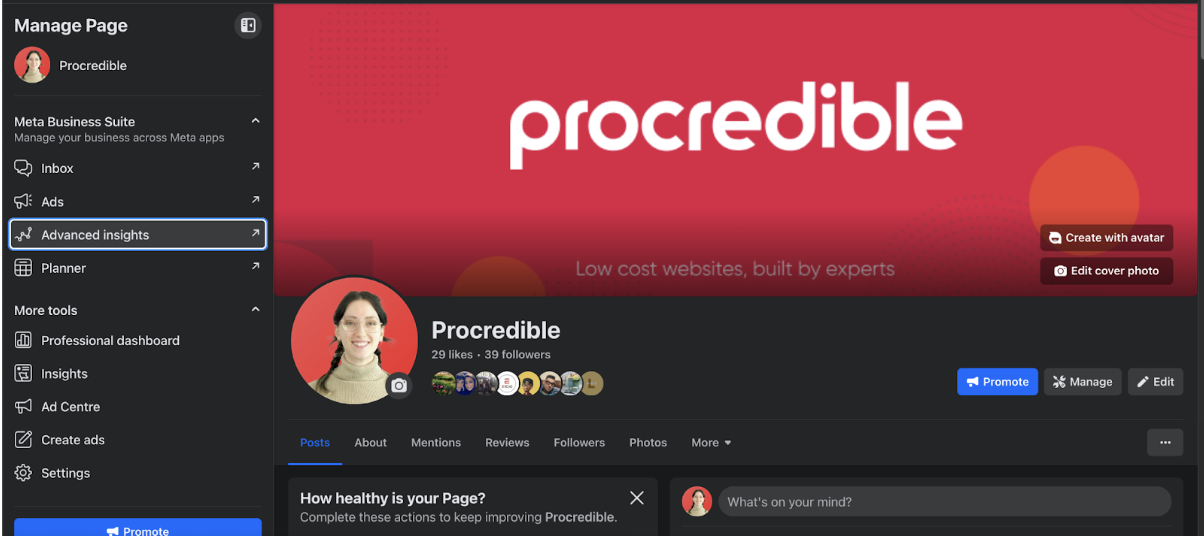
This article looks at how you can craft engaging social media content by knowing your audience, setting clear goals, and creating varied content types, tailored to resonate with your audience and achieve business objectives.
In this Article:
- Know your audience
- Goals and objectives
- How to set social goals
- Crafting engaging content
- Repurposing content
- Measuring success
- Final thoughts
Mastering the art of content planning for your social media platforms is the cornerstone of a successful digital presence.
Where attention spans are fleeting, and user preferences constantly evolve, understanding the nuances of effective content planning and creation is more critical than ever. This blog delves into the intricacies of planning content for your socials, offering insights, strategies, and actionable tips to help you navigate the ever-changing world of social media.
Get to know your Audience
If you read our articles you’ll know that we mention this often, but that’s because it’s absolutely crucial for small businesses to understand. It should be applied to every decision you make for your business, this includes the planning and writing for your social media content.
Knowing your audience is essential for planning effective social media content strategies. Here’s how understanding your audience can significantly impact your social content planning:
Relevant Content Creation: Understanding your audience’s demographics, interests, preferences, and behaviours helps in creating content that resonates with them. You can tailor your content to match their interests, ensuring its relevant and engaging.
Knowing your audience also helps you pick the best tone for your social media posts. You can figure this from analysing how your audience interacts, as well as looking at what sort of tones your competitors use in their content.
Platform Preference: Different audiences may prefer different content formats. In other words, some people might prefer to watch videos and therefore the platform they would mostly use could be Youtube or TikTok. There are so many forms of content now, whether that’s images, infographics, or written content; once you understand what content and therefore platform preference is you will be a step closer to creating meaningful content in the most relevant location to your audience.
Engagement and Interaction: Understanding your audience’s interests and pain points allows you to create content that encourages interaction. By addressing their questions, comments, and concerns, you can foster a stronger community and increase engagement with your brand!
Tailored content: Tailoring content to suit your audience’s preferences increases the likelihood of success, however make sure that when doing this it is still relevant to your brand. Whether you’re offering discounts, running contests, or promoting user-generated content, aligning with your audience’s interests will help to maximise the impact of your content.
Feedback and Improvement: Analysing audience reactions, comments, and reviews provides valuable feedback. This information helps refine your content strategy, allowing you to continuously improve and adapt to better suit your audience’s needs. It’s also a great opportunity to address any pain points or issues with your brand, and demonstrate that your business is proactive.
Set goals and objectives
Before you can craft your content you need to set some goals. Just how you would set goals and objectives for your business, the same should be done for the content you share.
Imagine your business as a vehicle embarking on a long journey, your business goals are the destination. Now, consider social media as the intricate network of roads, or motorways that lead to various waypoints within this journey to help you reach your destination.
Just as in business, where you set specific goals like reaching a particular revenue milestone or expanding into new markets, your social media goals should act as a bridge to help you reach your destination. These could include increasing brand awareness, driving website traffic, or boosting customer engagement.
With this in mind, setting clear objectives for your social media content is crucial. Afterall, everything you share should be shared with intent.
How do I come up with my social media goals?
Social media goals should be specific, measurable objectives set to guide and measure the effectiveness of a brand or individual’s presence on social platforms. These goals align with broader business objectives and help define what success looks like in the realm of social media.
The end result of these goals may encompass various things, such as driving website traffic, boosting engagement, or generating leads.
How to set objectives for social media
One way you can set objectives for your social media is to make your goals SMART:
- Specific
- Measurable
- Achievable
- Relevant
- Time-bound
This would mean that, instead of having the goal of ‘gain more clients’, it could instead be…
Specific: Create and distribute a series of educational content on Instagram aimed at increasing product knowledge among followers.
Measurable: Achieve a 15% increase in post engagement and a 5% rise in product enquiries through Instagram’s Direct Messages.
Achievable: Develop concise and visually appealing educational posts about product features, benefits, and usage. Leverage existing resources and customer feedback.
Relevant: Enhance customer engagement and brand credibility by providing valuable information directly related to the products, aligning with the brand’s commitment to customer satisfaction!
Time-bound: Attain the targeted increase in engagement and inquiries within a three-month period.
Once you have an idea of your goals and objectives, you can figure out what sort of content you will need to plan and create for your socials. Keep in mind that all of your goals and objectives should align with your brand identity and values, and ensure that you set achievable goals.
Need a hand planning your social posts? Download our tool for 25+ content ideas.

Crafting Engaging Content
Creating engaging content involves a combination of understanding your audience, delivering value, maintaining consistency, and continuously adapting based on feedback and data analysis.
There are a multitude of ‘types’ of content you can share on social media, for example…
- Imagery
- Text based content
- Video
- Interactive content
- Behind the scenes
- Testimonials & reviews
- Blogs
- Trend relevant content
When crafting your content, ask yourself where the best place to share it would be. There are pros and cons to every social media platform, but each will have its own strengths and depending on what you’re sharing and your industry.
If you are a nail salon, it might make more sense to be active on a platform like Instagram, as it’s likely that most of your content will be images of your work. Whereas, an electrician might have better luck connecting with their clients on a platform like Facebook throughout different groups.
When writing your content there are a few methods you should keep in mind:
Storytelling: Craft narratives that captivate and emotionally connect with your audience, making your content more relatable and memorable.
Visual Appeal: Use high-quality visuals, including images, videos, infographics, and graphics, to enhance the attractiveness and shareability of your content.
Value Addition: Provide valuable and relevant information, insights, or entertainment that addresses your audience’s needs or solves their problems. Analyse your audience’s pain points and create your content accordingly to try and address and resolve them.
Consistency: Maintain a consistent brand voice, style, and posting schedule to establish reliability and keep your audience engaged.
Stay Authentic: Be genuine and authentic in your content to build trust and credibility with your audience, fostering long-term relationships.
Repurpose your content
When making content, the thing to keep in mind is that you should never be worried about reposting something you’ve already shared. In this particular example, blogs are great for this, as you can reshare your blog and multiple other areas of content from within.
Whether you’re writing blogs for your website, for your socials or for your professional development, there are so many benefits to writing blogs for your social media.
Blog writing plays a significant part in enhancing a businesses credibility, by writing blogs you are demonstrating your authority and knowledge on a topic. They’re also a great tool for planning out your social media content.
So what is one of the main benefits to blog writing?
Let’s say you write a blog on ‘how to identify your target audience’, this may take you 3 hours to write, but now, instead of wrecking your brain trying to come up with different content ideas for your socials, you’ve got a multitude of content that you can share all neatly wrapped up in a blog.
In other words, you could turn that blog, therefore repurposing it, into a video or tips for social posts!
Some examples of what you could do with your blog are…
- Share quotes and snippets that highlight key points.
- Share statistics to grab attention and entice potential readers.
- Make graphics to summarise sections
- Create polls or quizzes based on your blog findings. For example, a poll on ‘which social media platform your target audience is on’.
- Create a short animated video to summarise the blog’s main point. Providing a visual overview that offers some insight into your profession.
Not to mention that you can also just share the blog on your socials. Blog writing not only helps businesses with things like SEO rankings but is also a fantastic tool for planning and creating your content.
Measuring Success
Understanding the effectiveness of your efforts is pivotal, if not more important than sharing the content itself. This is why we urge you to analyse and adapt from data, so that you can ensure your strategies are as efficient as they can possibly be.
Here’s how to measure success, analyse data, and refine content strategies for optimal performance:
Monitoring social media data offers invaluable insights. Such as engagement rates, reach, clicks and shares. An example of where you can analyse this through Facebook. All you need to do is go onto your business page, click on Advanced insights. This will take you to an area where you can analyse how your content is doing, page views, reach and more.

Understanding which metrics align with your content goals enables a deeper comprehension of audience behaviour and preferences.
Data analysis is the backbone of refining content strategies. By delving into your data, you should be able to identify patterns. Whether this is through looking at your audience behaviour, you might uncover actionable insights.
Adapting Content Plans is essential for growth. Armed with data-driven insights and user feedback, adapting your content plans to cater precisely to audience preferences will help your content to really resonate. This method of ‘fine-tuning’ strategies is a vital stepping stone toward successful content creation.
Remember that successful content doesn’t end at publication. Continuously measuring, analysing, and updating content strategies based on performance metrics and areas like audience feedback can foster a dynamic and responsive content ‘ecosystem’. This perpetual cycle of improvement is key to staying relevant, engaging, and impactful in the ever-evolving digital landscape!
Final thoughts
In today’s dynamic digital landscape, a successful social media presence hinges on mastering the craft of content planning. As attention spans dwindle and user preferences evolve, the significance of strategic content creation cannot be overstated.
Craft content that captivates, educates, and resonates with your audience by understanding their preferences and aligning with your brand’s voice. You should set clear goals and experiment with different content formats to maintain engagement and relevance. The thing to keep in mind is that by remaining agile, responsive, and committed to delivering value, you’ll forge stronger connections with your audience, which will foster brand loyalty, and carve a distinctive identity in the bustling realm of social media in an otherwise ‘saturated’ and competitive market.




